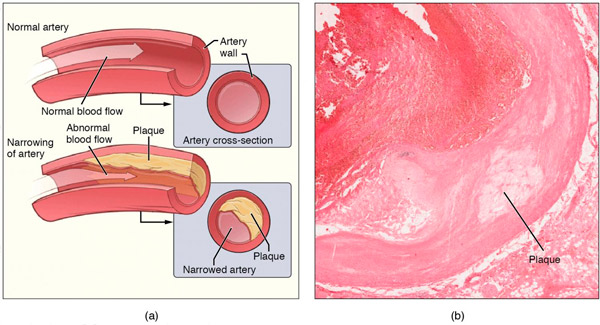
研究人员发现,动脉粥样硬化患者动脉内壁的平滑肌细胞可以转化为新的细胞类型,并获得类似癌症的特征,从而使病情恶化。这项研究发表在《循环》杂志上。
动脉粥样硬化的特征是动脉壁变窄,并可能增加患冠心病、中风、外周动脉疾病或肾脏疾病的风险。这些由美国国立卫生研究院 (NIH) 支持的发现,可能为使用抗癌药物对抗导致动脉斑块形成的肿瘤机制铺平道路。动脉斑块是心血管疾病的主要原因。
美国国立卫生研究院下属的国家心肺血液研究所心血管科学部项目主任医学博士艾哈迈德·哈桑 (Ahmed Hasan) 表示:“这一发现为我们理解预防和治疗动脉粥样硬化的治疗策略开辟了一个全新的维度。”
“先前的研究表明动脉粥样硬化和癌症可能有一些相似之处,但直到现在这种联系还没有得到充分的描述。”
研究人员结合小鼠模型中的分子技术和从动脉粥样硬化患者身上采集的组织样本,描述了导致平滑肌细胞转变为癌症样细胞类型的分子机制。
研究人员发现,与健康组织相比,动脉粥样硬化斑块中转化的平滑肌细胞中DNA损伤和基因组不稳定性(癌症的两个标志)水平升高。基因组不稳定性是指细胞分裂过程中对DNA突变和其他基因改变的敏感性增加。
进一步研究后,他们还发现,随着平滑肌细胞重编程为斑块形成细胞,癌症相关基因变得更加活跃。使用已知癌症突变的小鼠模型,可加速重编程并加重动脉粥样硬化。最终,使用靶向DNA损伤的抗癌药物尼拉帕尼治疗动脉粥样硬化小鼠,显示出预防和治疗动脉粥样硬化的潜力。

动脉粥样硬化是一种心血管系统疾病。如果它影响到冠状动脉(负责给心脏供血),就可能导致心绞痛,甚至在最严重的情况下引发心脏病。来源:维基百科/CC BY 3.0
“我们确实看到尼拉帕尼确实减少了小鼠的动脉粥样硬化斑块,”田纳西州纳什维尔范德比尔特大学医学中心医学副教授、该研究的第一作者 Huize Pan 博士说。
纽约哥伦比亚大学医学教授、该研究的资深作者 Muredah Reilly 医学博士解释说,了解导致平滑肌细胞转变的分子机制可能提供破坏肿瘤通路和改变细胞行为的机会,从而可以预防或减缓动脉粥样硬化的进展。

